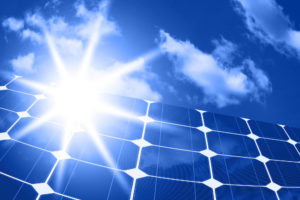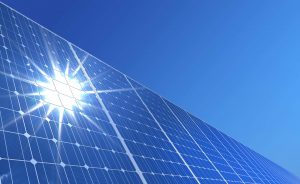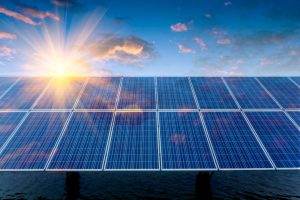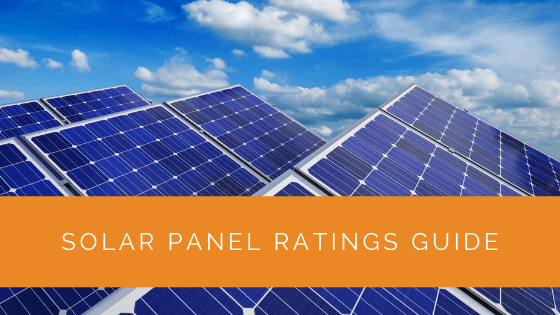It’s common for solar panel buyers to wonder about all the confusing words and terms on their panels’ spec sheets. Words like temperature coefficient, wattage, and power tolerance can be troublesome to understand for average solar panel buyers. What do these terms mean? Which of these ratings is the most important?
To understand how solar panels work, you must have a grasp of solar panel ratings. These ratings can help you make an informed decision if you are thinking about buying solar panels. You’ll be able to evaluate different solar panels and settle for the one that suits your needs.
Contents
- 1 Key Takeaways
- 2 Standard Test Conditions (STC)
- 3 Nominal Operating Cell Temperature (NOCT)
- 4 Wattage
- 5 Efficiency Ratings
- 6 Temperature Coefficient
- 7 Tolerance
- 8 Solar Panel Tiers
- 9 Sun Hours
- 10 Case Study: Enhancing Solar Energy Understanding Through Panel Ratings
- 11 Expert Insights From Our Solar Panel Installers About Solar Panel Ratings
- 12 Experience Solar Excellence with Us!
- 13 Conclusion
Key Takeaways
- Solar panels are rated under STC, which involves testing in a controlled environment with specific conditions. This rating helps you understand a solar panel’s peak performance.
- NOCT ratings reflect real-world conditions, including sunlight intensity and temperature, providing a more accurate assessment of a solar panel’s performance.
- Wattage represents a solar panel’s expected power output, while efficiency ratings indicate how well it converts sunlight into electricity. Higher wattage and efficiency ratings can lead to greater energy production and lower costs over time.
Standard Test Conditions (STC)
All solar panels have published power ratings. This power is rated under STC. By adding up the rated power of individual solar panels, you’ll have a solar panel system’s peak rating.
Solar panel manufacturers use this rating to evaluate panels during a process called flash testing. This process is conducted in a solar simulator known as a flash tester. Here, solar panels are exposed to 1000 watts per square meter of artificial sunlight. The atmospheric density and temperature are set at 1.5 and 77 °F, respectively.
The output from these tests under standard test conditions gives the solar panels accurate ratings. All solar panels are rated using the same criteria. This implies that 100 watts from one solar maker will produce 100 watts from a different solar panel manufacturer under standard test conditions.

Nominal Operating Cell Temperature (NOCT)
STC barely resembles the real world. For this reason, municipalities and utilities have come up with Nominal Operating Cell Temperature (NOCT) that resembles the actual conditions of the real world. This rating helps these agencies to issue tax credits and rebates more accurately.
The conditions under NOCT are:
- Sunlight irradiance of 800 watts per square meter
- Wind velocity of 2.24 mph with the panel’s rear side open to the wind
- Air temperature of around 68°F
Given that solar cells are usually black or blue, they can heat up during sunny days. Here, the average cell temperature is approximately 118.4 °F. This isn’t the temperature of air but the solar cells.
Remember, all solar panels typically lose voltage under heat. For this reason, it is advisable to keep the back of your solar panel open for the wind. NOCT ratings mimic real-world conditions.
Wattage
The wattage represents the expected power output of a solar panel. Solar panel watts are measured under ideal temperature and sunlight conditions, with most solar panels rated between 250 and 400 watts. Still, there are solar panels with higher wattage.
Higher watt modules translate to higher efficiency ratings. They require fewer modules to meet your energy needs. Generally, the wattage of your solar panel system primarily depends on the price of your system.
To calculate wattage, multiply the amps and total volts of the solar panels. Volts refer to the electrical force produced by solar panels, while amps represent overall energy consumption.
Efficiency Ratings
This rating describes the ability of a solar panel to convert the sun’s energy into usable electricity. It measures the irradiation that falls on a solar panel’s surface. For electricity to be generated, sunlight has to hit the surface of the solar panel.
Different solar panels may have different efficiency ratings. A solar panel with a higher efficiency rating will generate more electricity than one with a lower rating under the same amount of sunlight.
This rating is determined by how the panel’s photovoltaic cells produce electricity. The efficiency ratings for most panels range between 15% and 20%.
Temperature Coefficient
Ever wondered how well your solar panels will perform in less ideal conditions? Temperature coefficients tell you what to expect in less favorable circumstances.
Just like any other electrical appliance, solar panels operate optimally when kept in cool conditions. They work efficiently at around 77° F.
This coefficient alerts you on what to expect during hot summer days. It gives you an idea of the panel’s performance degradation. For each degree above 77° F, expect electricity production to drop by the coefficient’s value. If your solar panel has a lower temperature coefficient, the better.

Tolerance
During the production of solar panels, some inevitable variations that affect energy output are introduced. This rating indicates the variation between a solar panel’s nameplate rating and its output in standard test conditions.
Power tolerance doesn’t significantly affect power production. It is negligible—still, the smaller your solar panels’ variation, the better.
For instance, a solar panel with a 250 watts rating and a +/=5% tolerance may generate power ranging from 237.5 to 262.5 watts.
Solar Panel Tiers
When researching which solar panels to buy, you’ll hear manufacturers say tier 1, tier 2, and tier 3. These terms generally classify solar panel manufacturers.
Tier 1
This solar panel manufacturer class has reputable brands with a good reputation for the solar panels they produce. All of the solar panel manufacturers in this category have been in production for over five years. Solar panels from these companies are low risk.
Some of these companies are publicly listed on stock exchanges. They employ advanced robotic processes when producing solar panels. Here, manufacturing of all solar panel components, including wafers, is done in-house.
Tier 1 companies invest a lot of money in research and development and branding. They are product innovators.
Products from tier 1 companies are pretty more expensive than those from tier 2 and tier 3.

Tier 2
These are smaller players in the solar panel business who have been in business for less than five years. Tier 2 manufacturers put little to no investment in research and development.
They rely on manual labor to get most work done, translating to a higher risk of fault. These manufacturers only use partial robotics in the production of solar panels. Tier 2 manufacturers most often buy components from tier 1 manufacturers.
Tier 3
Tier 3 manufacturers are young companies. These are manufacturers who’ve been producing solar panels for 1-2 years. Humans mainly handle their manufacturing processes.
Tier 3 manufacturers don’t invest in any research and development programs. They only assemble panels they acquire from tier 1 manufacturers. These companies have no capacity to manufacture silicon cells.
Sun Hours
Solar panels don’t receive sunlight throughout the day. They only receive the sun’s energy when they are facing the sun. This is when solar panels receive the most sunlight. Typically, this happens at midday.
A peak sun hour is a rating describing the amount of sunlight (solar irradiance) in a specific area. It is the intensity of sunlight that reaches approximately 1000 watts of energy per square meter. This is around 10.5 feet.
As you get closer to the equator, the number of peak sun hours increases. Your solar panel may get close to 7 hours of sunlight daily. Nonetheless, the average number of peak sun hours in most US areas is around 3-5 hours.
Case Study: Enhancing Solar Energy Understanding Through Panel Ratings
Background
At Solar Panels Network USA, we aim to educate homeowners about the critical aspects of solar energy to help them make informed decisions. Recently, we worked with a client who was overwhelmed by the various technical terms and ratings on solar panel spec sheets. They wanted to ensure they selected the best panels for their new solar installation.
Project Overview
The client’s primary concern was understanding the different ratings and how they would impact their solar system’s performance and efficiency. They sought our expertise to demystify these terms and help them choose the most suitable solar panels for their needs.
Implementation
We began by conducting a detailed consultation to explain key solar panel ratings, such as Standard Test Conditions (STC), Nominal Operating Cell Temperature (NOCT), wattage, efficiency ratings, temperature coefficient, and power tolerance.
- Educational Session: We organized a session to break down each term using simple analogies and real-world examples. This included explaining how STC provides a baseline for comparing panels and how NOCT offers a more realistic performance metric under actual conditions.
- Panel Selection: Based on the client’s energy needs and environmental conditions, we recommended monocrystalline silicon panels with high efficiency and favorable temperature coefficients. These panels were selected for their superior performance and reliability.
- Interactive Demonstration: We set up a demonstration with different panels, showing the impact of temperature on performance and the significance of power tolerance in real-world scenarios. This hands-on experience helped the client visualize how each rating affects panel output.
Results
The educational approach and personalized recommendations led to a highly satisfactory outcome for the client. Key achievements included:
- Informed Decision-Making: The client felt empowered to make informed decisions, understanding the importance of each rating and how it would affect their solar energy production.
- Optimal Panel Selection: By choosing panels with higher efficiency and lower temperature coefficients, the client maximized their energy production and ensured consistent performance, even during high-temperature periods.
- Enhanced Satisfaction: The client appreciated the clarity and practical insights provided, which demystified the technical aspects and reinforced their confidence in their investment.
The selected panels delivered excellent performance, with energy production exceeding initial projections. This translated into substantial energy savings and a faster return on investment. The client’s system consistently operated at optimal levels, thanks to the informed choices made during the selection process.
Summary
Our case study highlights the importance of understanding solar panel ratings and their real-world implications. By educating our clients and providing hands-on demonstrations, we help them make informed decisions that optimize their solar energy systems. At Solar Panels Network USA, we are committed to delivering expert guidance and top-quality solar solutions that meet our clients’ unique needs and expectations.
Expert Insights From Our Solar Panel Installers About Solar Panel Ratings
Understanding solar panel ratings is crucial for any homeowner considering solar energy. These ratings, such as wattage and efficiency, directly impact the performance and savings you can achieve. Knowing what each term means helps in making informed decisions.
Lead Solar Installer
Temperature coefficient and NOCT ratings are often overlooked but are vital in real-world performance. They provide insights into how your panels will perform under different environmental conditions, which is essential for maximizing energy production.
Senior Solar Technician
Power tolerance is another important factor. It indicates the reliability of your panels’ output. A smaller variation in power tolerance means more consistent performance, which translates to better energy efficiency and savings over time.
Solar Energy Consultant
Experience Solar Excellence with Us!
Trust in Solar Panels Network USA, where our seasoned experts deliver top-quality solar solutions for homes and businesses nationwide. With a legacy of countless successful installations and a commitment to sustainable energy, we’re your reliable partner in the solar journey. Ready for a brighter, eco-friendly future? Call us now at (855) 427-0058 and harness the power of the sun!
Conclusion
Every solar panel buyer wants to buy the best solar panels available for their home or business. Regrettably, the terms used in the solar industry are far beyond the understanding of most solar buyers. This makes it even harder for buyers to make informed decisions about the products they want to settle on.
Many solar buyers only know about efficiency ratings. Different ratings can help you understand what you need. It’s essential to be aware of other ratings that will affect your solar panels, including wattage and temperature coefficient.
Finding out about these ratings gives you a better hand when selecting your solar panels. You’ll be able to choose superior solar panels that will translate to a high return on investment.
About the Author
Solar Panels Network USA stands at the forefront of solar energy solutions, driven by a team of seasoned solar engineers and energy consultants. With over decades of experience in delivering high-quality solar installations and maintenance, we are committed to promoting sustainable energy through customer-centric, tailored solutions. Our articles reflect this commitment, crafted collaboratively by experts to provide accurate, up-to-date insights into solar technology, ensuring our readers are well-informed and empowered in their solar energy decisions.

